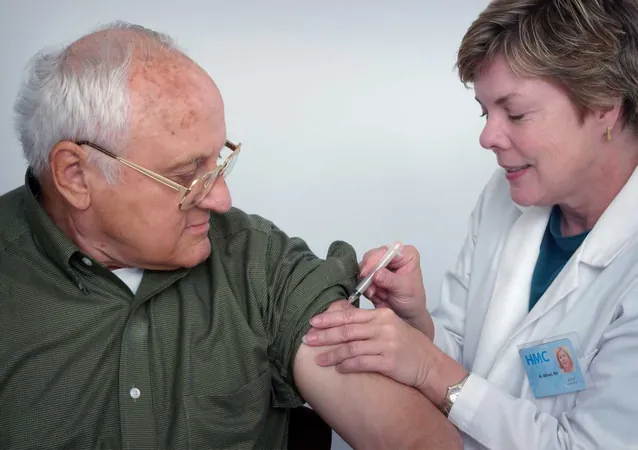
Why Influenza Vaccination is Vital in Stopping Family Infections – Shocking Statistics Inside!
2024-11-26
Author: Wei
Introduction
Recent research has highlighted a concerning risk of influenza spreading within households, especially among unvaccinated individuals. According to findings published in the esteemed JAMA Network Open, unvaccinated members of a household face a startling 15-20% chance of contracting influenza once it has entered the home, with children being particularly susceptible.
Key Study Insights
The research team conducted an extensive analysis during three consecutive influenza seasons (2017-2020), gathering data from 699 primary cases and tracking 1,581 household contacts in Tennessee and Wisconsin. They implemented a prospective case-ascertained household transmission cohort study, meticulously collecting sociodemographic data and details on household characteristics, medical history, and vaccination status.
Throughout this study, participants recorded daily symptoms and collected nasal swabs for analysis following the introduction of influenza.
Vaccine Efficacy Detailed
The effectiveness of the influenza vaccine varied significantly depending on the virus type. Notably, vaccine effectiveness (VE) against Type A influenza was found to be a meager 5%, while the effectiveness against Type B influenza was considerably higher at 56.4%. Remarkably, among children aged 5 to 17, the effectiveness soared to 88.4%, and for adults aged 18 to 49, it was 70.8%. The study also broke down the effectiveness against specific strains of Type B, showing a VE of 49.5% against the Victoria strain and just 25.5% against the Yamagata strain.
Flu Vaccine Uptake in America
Despite these alarming statistics regarding household transmission, only approximately 50% of Americans receive the flu vaccine annually. In the last respiratory virus season, only 55.4% of children aged 6 months to 17 years and 44.9% of adults over 18 received at least one dose. Alarmingly, this reflects a drop in vaccination rates from the previous season.
The Centers for Disease Control and Prevention (CDC) has detailed the vaccination rates by age group for 2023: - Adults aged 18-34: 35.6% - Adults aged 35-49: 39.5% - Adults aged 50-64: 49.6% - Adults aged 65 and older: 71.3%
A Call for Comprehensive Preventive Strategies
As vaccine uptake remains distressingly low, especially in the context of illnesses like COVID-19 and RSV, experts emphasize the importance of additional strategies to protect vulnerable populations in households. Suggested complementary measures include isolating sick individuals, improving ventilation, maintaining proper hand hygiene, disinfecting surfaces, wearing masks, and using antiviral medications when necessary.
The panel of researchers underlined the need for these methods to combat the inconsistencies in vaccine effectiveness and to safeguard at-risk groups, including children, pregnant women, and the elderly.
Conclusion
In conclusion, with the potential for influenza to spread rapidly in homes, the importance of vaccination and comprehensive preventive strategies cannot be overstated. Stay informed, get vaccinated, and take necessary precautions to protect your loved ones this flu season!


 Brasil (PT)
Brasil (PT)
 Canada (EN)
Canada (EN)
 Chile (ES)
Chile (ES)
 España (ES)
España (ES)
 France (FR)
France (FR)
 Hong Kong (EN)
Hong Kong (EN)
 Italia (IT)
Italia (IT)
 日本 (JA)
日本 (JA)
 Magyarország (HU)
Magyarország (HU)
 Norge (NO)
Norge (NO)
 Polska (PL)
Polska (PL)
 Schweiz (DE)
Schweiz (DE)
 Singapore (EN)
Singapore (EN)
 Sverige (SV)
Sverige (SV)
 Suomi (FI)
Suomi (FI)
 Türkiye (TR)
Türkiye (TR)